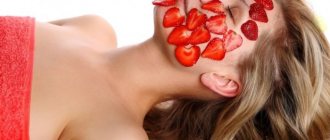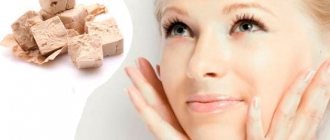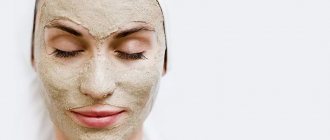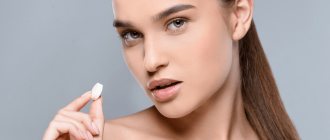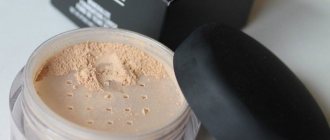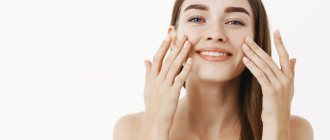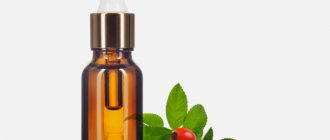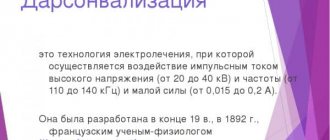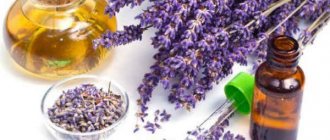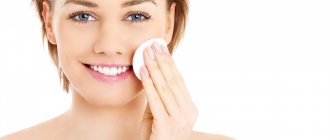What to do first for wrinkles and acne?
If you are already 30-35 years old, the first wrinkles are already appearing on your skin, and acne is still bothering you, you should find out the reason. Few people do exactly this: half of women disguise pimples, and the other part tries to independently cure their skin with pharmaceutical drugs. How to properly deal with wrinkles and acne?
The first thing you need to do is visit a general practitioner, take general blood and urine tests, and only then contact a dermatologist and endocrinologist. No remedy will help cure acne if the internal problem that led to it is not solved. Often the cause of rashes is hormonal imbalance and often problems with the gastrointestinal tract.
Acne (pimples) is a skin disease, often with a chronic recurrent course. The basis of the disease is excessive production of sebum, changes in its composition and increased growth of the stratum corneum of the skin near the hair follicles. The inflammatory process (purulent acne) develops when propionobacteria, which normally live on the surface of the skin, penetrate into its deeper layers. The development of acne is also possible against the background of hormonal imbalance, reduced immunity and gastrointestinal diseases.
Acne-prone skin: care
Sensitive skin may react by developing acne if not properly cared for. Therefore, it is worth excluding products with fragrances, mineral oils, and alcohol (ethyl, ethanol, etc.) from your daily beauty routine. These ingredients can disrupt pH and harm the hydrolipid mantle.
Avoid perfumed cosmetics; they may contain phthalates as fragrances, which can affect hormonal levels. Vaseline and liquid paraffin can clog pores, causing acne.
If you develop rashes as a result of improper care or other reasons, you need to get rid of them correctly. One of the topical remedies against acne is Azelik® gel, which must be applied 2 times a day to cleansed skin5.
Useful ingredients for rashes include vitamin A, tea tree oil, lactic, salicylic, azelaic, glycolic acids, clay, sulfur.
Care for dry skin with acne
Acne usually appears on oily skin, but dry skin is not immune to inflammation. Constantly flaky and dehydrated epidermis is vulnerable to bacterial attack. You should not frequently use exfoliating agents, as they can damage the hydrolipidic mantle, destroying the protection against pathogenic microflora.
It is better to replace foamy cleansers with creamy ones. You can apply salicylic acid cream at night.
Care for oily, acne-prone skin
Oily skin with acne needs more thorough cleansing. Your care should include products with charcoal, salicylic acid, and tea tree oil. After washing your face, you can use clay masks once a week.
Don't neglect hydration. Maintaining the moisture balance of oily skin is extremely important. With a lack of moisture, the sebaceous glands will produce more secretion, which will worsen the course of acne.
Professional treatment
You can solve the problem of wrinkles and acne in a cosmetology salon. Laser therapy procedures are compatible with each other and can be carried out in sessions over a certain period of time. The course, frequency and number of procedures are selected by the doctor.
Laser treatment for acne. An effective technique that has a comprehensive effect on the skin:
- has a bactericidal effect: destroys propionobacteria, which support the inflammatory process;
- improves blood supply at the site of exposure: leukocytes flow through the bloodstream to the sites of infection and suppress inflammation;
- stimulates local immunity, which is a natural prevention of relapse;
- enhances the activity of fibroblast cells responsible for the production of fibers that form the skin frame. Those. simultaneously with acne treatment, the natural rejuvenation process starts.
The impact of the laser is safe, painless and controlled: the skin is not damaged during thermal treatment.
The individual selection of parameters is of utmost importance: intensity, depth and time of exposure of the laser beam to the skin. There are no universal parameters that can be applied to everyone.
Laser therapy is also used to treat the scars left on the skin by deep pimples and severe acne.
How to understand what degree of acne?
The causes and symptoms of acne may vary depending on its severity. For example, with mild acne, the rashes are mainly represented by comedones, which are located mainly on the face. They can resolve on their own without leaving any traces behind. With moderate acne, there are much more acne, multiple papules and pustules appear.9
For mild to moderate acne, Azelik® gel may be included in the treatment. It contains azelaic acid, which affects several parts of the pathogenesis of the disease.5
With severe acne, more than 20 papules and pustules are observed, and cysts may form. After resolution of such rashes, scars and spots usually remain31. Treatment of severe acne should include the use of systemic medications18. After remission of the disease is achieved, you can undergo a course of cosmetic procedures to improve the condition of the skin, for example, laser therapy, mesotherapy, ozone therapy, etc.
Laser skin rejuvenation
An effective method for correcting initial age-related changes at the age of 30-40 years:
- the activity of fibroblasts increases: cells responsible for the production of collagen and elastin fibers;
- hypertrophied vessels are coagulated;
- microcirculation is activated;
- microclusters of melanin are destroyed and pigmentation is eliminated.
After a course of procedures, the oval of the face improves, small wrinkles are smoothed out, age spots are eliminated, and the natural complexion is restored. The skin becomes elastic and toned. Energy is released from the vascular structures, heating the deep layers of the dermis and compacting the collagen framework.
If at the age of 30-35 the first wrinkles are natural, then acne is a skin disease that requires clarification of the causes and correction.
Acne. Causes, symptoms, treatment
16.11.2020
Reading time: 16 min
... Acne is one of the most common skin diseases.
During puberty, each person experiences more or less severe rashes, which for many disappear on their own over time. And despite the fact that acne occurs among both men and women, representatives of the stronger sex often develop more severe forms of this disease. Early treatment helps reduce the risk of scarring and other negative consequences. 1. What is acne vulgaris?
The emerging changes on the face of a young man in the form of acne cause great concern. From a scientific point of view, this problem is considered a dermatological skin disease. However, have you thought that it also causes psychological and emotional problems in the form of complexes?
The idea that acne is incurable is so widespread that there is even a Worldwide Support Group in England. Her goal is to help people suffering from this disease, to make their lives easier, which were ruined by these hated acne. The concept behind their work is that no life should be ruined by a skin disease that can be cured without spending millions.
Acne vulgaris (acne vulgaris) is a disease that mainly affects young people. It is associated with overactive sebaceous glands, which subsequently gives rise to characteristic acne, pustules, maculopapular rashes and purulent cysts localized in the face and back. This occurs most often in adolescents during puberty, that is, between the ages of 13 and 20 years. However, it may also apply to people after this period has ended. For example, at the age of about 40 years. Moreover, there are rare cases of this disease among young children.
Acne continues to be one of the most common reasons for visiting cosmetic and dermatology clinics for young people suffering from skin problems.
2.
Classification of the disease
1) Comedonal form of acne. Mild form of rash. It is characterized by oily skin and the presence of only open (blackheads) and closed (whiteheads) comedones, without the formation of pustules and nodules.
2) Papulopustular acne. This is a more severe form. In the process of development, along with typical acne, purulent cysts are formed. The final healing of such injuries often leaves unpleasant scars that leave the surface of the skin uneven and sometimes quite disfigured. There are several degrees of severity of this form.
3) Conglobate/nodular acne. Accumulated acne, or, as they are also called, acne conglobata, appears in the form of deep infiltrates and purulent cysts, sometimes merging. They are numerous and have very large foci of inflammation. The consequence of such acne can be keloid scars. They also often accompany pyoderma and sometimes affect not only the skin of the face, but also the back of the head. The most severe form of this disease causes severe systemic symptoms. In addition to various rashes (purulent, cluster, etc.), there are general symptoms of inflammation:
- fever;
- leukocytosis;
- high ESR;
- joint pain.
On x-ray examination, the image shows changes in the sternoclavicular joint.
4) Other forms of acne:
-hormonal acne. This type of rash is caused by hormonal imbalances and increased insulin resistance in the body. As a result, this leads to disturbances in the secretion of sebum and its increased secretion. These disorders mainly affect boys, because it is possible to increase the production of androgens. But women, especially during menstruation, are susceptible to hormonal imbalance;
- medicinal acne. Occurs while taking a number of medications (hormonal drugs, anabolic steroids, androgens, thyroxine, antiepileptic drugs, barbiturates, antituberculosis drugs, azathioprine, cyclosporine A, chloral hydrate, lithium salts, iodine, chlorine, bromine, disulfiram, cetuximab, thiouracil, some vitamins, especially group B);
-excoriated acne (cause - presence of mental pathologies);
- baby acne.
3.
Causes of acne
Acne vulgaris is a disease that affects the hair follicle. The sebaceous glands produce sebum, which acts as a natural lubricant for the skin. Sebum also prevents dry skin and creates an antibacterial and antifungal layer. During adolescence, this function can be disrupted and, as a result, lead to the formation of acne.
The appearance of a pustule around the hair follicle is caused by a combination of three factors:
- excessive secretion of sebum;
- bacterial growth inside the hair follicle;
- blockage of the sebaceous glands (the reasons are not clear).
4. Symptoms of acne
Everyone knows what ordinary acne looks like. They usually appear on the face: around the forehead, chin, nose and cheeks, as well as on the back and chest.
They are classified into:
- non-inflammatory: open and closed acne;
- inflammatory: pustules, papules and cysts containing purulent material.
Unfortunately, acne is considered a chronic disease.
Acne manifests itself in different ways and there is another classification that includes two types of acne: closed and open.
Closed acne
can be distinguished by the following criteria:
- sometimes have a noticeable hole in the middle;
- clearly visible when the skin is stretched;
- small size;
- White color.
This type of rash is formed as a result of the proliferation of stratum corneum cells (dead cells of the stratum corneum) in the sebaceous gland.
The next type is open comedones.
(or blackheads), which are formed as a result of the proliferation of corneocytes in combination with stagnation of sebum. The comedonal plug contains numerous bacteria associated with the hair follicle. They can be recognized by the following signs:
· a mass of sebum comes out through the hole in the central part;
· Blackheads have a dark color on the surface of the skin not only due to the oxidation of keratin and sebum, but also due to the accumulation of melanin.
It is strictly not recommended to squeeze out blackheads on your own, as papular and purulent rashes appear after this.
5.
Skin diseases or acne?
In addition to common acne, many other conditions can occur on the face, which are sometimes very difficult to distinguish.
The disease that is most often confused with acne is inflammation of the hair follicles.
. The hair follicle itself is the place from which hair grows and sebum produced by the skin glands is secreted. Inflammation of the hair follicles is caused by a bacterial infection, most often staphylococcal. It appears as blisters filled with white fluid (pus) surrounded by reddened skin. These “pimples” are often riddled with hair and can appear anywhere on the body: on the face, torso, or even the limbs.
Inflammation of the hair follicles differs from acne in the absence of acne appearing in different places, and not just in the seborrheic area. Also, inflammation has a shorter duration.
Another disease that can mimic acne is rosacea
. This is an annoying, chronic skin condition that only affects the face. It manifests itself in the form of erythema, papules and pustules in its central part: on the forehead, nose and cheeks. Rosacea is characterized by mild redness that occurs under the influence of emotions, wind or temperature changes, which is caused by impaired functioning of small blood vessels (vasomotor disorders).
Although acne is a common and relatively harmless condition, if it occurs, you should definitely consult a specialist (dermatologist or family doctor) before you start treating yourself. Perhaps the cause of the disturbing symptoms is another disease that requires completely different therapy. However, if it is still acne, the doctor will suggest the most effective treatment method and explain to you how to properly care for your skin in this case.
Skin lesions appear on the face during many dermatological and chronic diseases. The most common, of course, is ordinary acne. And all bacterial infections, which are often indistinguishable from ordinary acne, located in the T-zone, are already a suspicion of a serious disease.
It should also be remembered that the presence of one disease does not exclude another. Take care of your skin and take advantage of the valuable advice of a specialist who will provide high-quality professional assistance. Thanks to this, it will be possible to avoid scars and other unpleasant consequences.
5.1. Infections
Areas of skin that are susceptible to damage due to the disappearance of rashes are especially prone to infection. Hair follicles are very susceptible to infections and can signal them by being itchy and sore. If not treated properly, the affected areas will expand and cause skin inflammation in other areas of the body.
6.
How to avoid acne?
If you take the necessary medications, use medicinal cosmetics and follow the doctor’s recommendations, then you can completely cure this disease. However, if treatment is started too late and the skin lesions become infected during the course of the disease, complications such as age spots, scars and bumpy skin may develop. The treatment process for this disease can only be successful if you regularly visit professional dermatological offices.
One of the most common causes of acne infections is frequent squeezing. Not only does the skin immediately become swollen and red, but this action can also lead to a bacterial skin infection, which is one of the most common causes of scarring.
It should also be remembered that all visits and procedures in beauty salons should be previously discussed with a dermatologist so that their action does not lead to a detrimental effect.
Persistent acne lesions can be caused by poor hygiene of the infected areas, so be sure to change towels and disinfect your skin as often as possible. It’s even better if you wipe your face and décolleté after washing with disposable towels or napkins.
Remember that skin infections can also be caused by frequent contact between your face and dirty hands. After all, they are the ones who collect a variety of types of bacteria that can get on the skin and cause inflammation.
7.
Treatment of acne
Treatment of acne depends on its form and severity. There are preparations for topical use in the form of sprays, suspensions, powders, pastes and ointments. In addition to topical medications, systemic medications are very effective, especially for more severe forms of acne. The substances used in them have antibacterial and anti-inflammatory effects. Topical retinoids and antibiotic therapy, if necessary, are often used to treat acne.
Main goals of treatment
:
· reduction of inflammation;
Reducing the amount of acne;
· reduction of sebum formation;
· reducing the influence of androgens on the sebaceous glands.
7.1. How to deal with acne?
Pay attention to how medications are used for treatment. They should be applied to the entire seborrheic area, and not just to individual areas of inflammation.
Medicines prescribed by a doctor should be used strictly according to indications! Improper use of medications, both local and systemic, reduces the effectiveness of therapy and increases the healing time of inflammatory lesions.
Do not rush to throw away medicinal cosmetics and medications as soon as the rashes disappear. This problem requires long-term treatment and if you stop using the right remedies, it will return very soon.
Don't use too many medications. Acne will not go away faster if you use cosmetics and medications more often. The consequence of excess medication can be excessive dryness of the skin, increased redness and irritation.
Regardless of whether you are going to the beach or just for a walk around the city, use sunscreen. The use of such cosmetics prevents premature aging and skin pigmentation.
7.2. Acne prevention
We all, of course, would like to avoid factors that contribute to the formation of acne. And this is quite real! Read the recommendations below on how to prevent the appearance of hated rashes.
If makeup is necessary to ensure well-being, self-confidence and increased self-esteem (mainly for young girls), use cosmetics without oily components or those that contain water. Sun filters and skin emollients applied to the face and skin should not increase acne formation.
7.3. Visit to a cosmetologist
Most teenagers try to treat acne on their own, for example by squeezing or scratching the pimples with their fingernails. Well, where would we be without the use of popular masks in the form of cosmetic patches? As a rule, these methods are much less effective than the treatment prescribed by a doctor. Moreover, they can lead to scarring.
To get rid of an existing problem, it is better to go to a beauty salon than to fight it alone.
It is worth remembering that visiting a cosmetologist only has an additional effect in the form of a temporary improvement in the appearance of the skin. An experienced cosmetologist can choose the appropriate treatment for your skin type and condition that will bring the desired effect. However, the best results are achieved when pharmacological treatment is used in combination with salon skin care.
8.
Prognosis for the appearance and disappearance of rashes
Acne is a chronic disease; there are periods of remission and exacerbation. Improvement in skin condition occurs due to normalization of lifestyle, eating habits, compliance with doctor’s recommendations and elimination of provoking factors (stress, hormonal status, treatment of chronic diseases).
Sometimes stress can have a significant impact on the exacerbation and appearance of new acne in some patients, so it is also worth considering this factor when treating.
In addition, do not forget about hormonal components. Proper examination and selection of suitable medications for a person suffering from acne can effectively cure the disease.
An extremely important issue in both dermatology and cosmetology is the removal of skin damage caused by acne. In this situation, appropriate cosmetics and procedures can help.
Elena Krivaya , the primary care physician at the Nanoesthetic Clinic
The Nanoesthetic Cosmetology Clinic has successful experience in treating acne for more than 10 years!
You can make an appointment with a cosmetologist online or by phone.
Vitamin complexes to combat the problem
To compensate for the lack of vitamins, it is not always enough just to add fresh vegetables and fruits to the diet. However, they are truly useful only during the season, and this period in Russia is 3-4 months a year. Therefore, when deciding how to get rid of goose bumps on the legs and other parts of the body, you should pay attention to special products - vitamin and mineral complexes.
They must contain the previously mentioned vitamins:
- A
– helps prevent keratinization of the epidermis; - C
– participates in the production of collagen, therefore, helps improve the structure of the skin; - D
– has a positive effect on the state of the vascular system, which delivers blood with nutrients to the skin tissues; - E
- helps strengthen cell membranes, but at the same time make them permeable to beneficial substances.
Natural coconut oil 100%, 100 ml, Raysan
589 ₽
Dietary supplement NOT A MEDICINE
